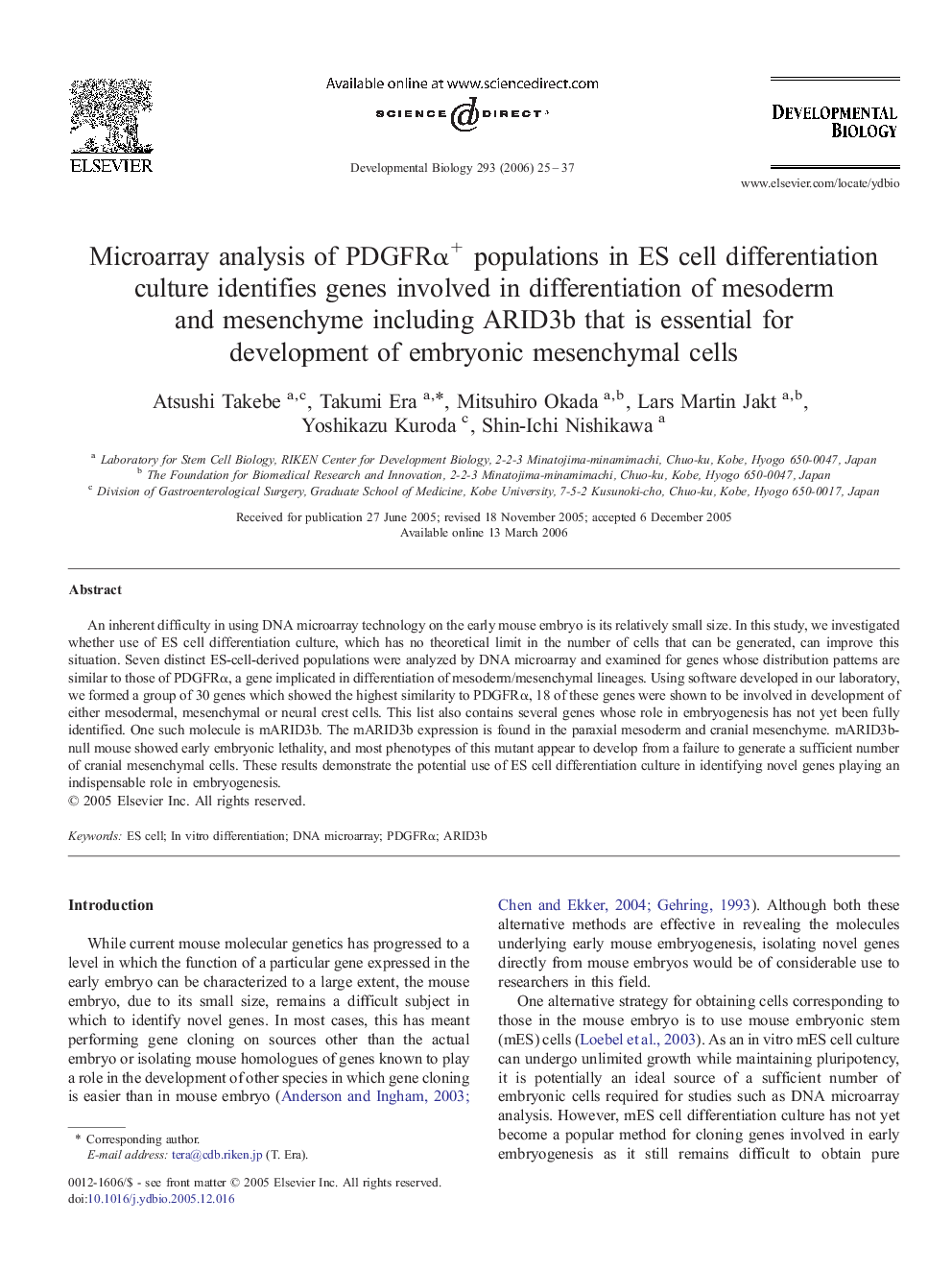| Article ID | Journal | Published Year | Pages | File Type |
|---|---|---|---|---|
| 2176059 | Developmental Biology | 2006 | 13 Pages |
An inherent difficulty in using DNA microarray technology on the early mouse embryo is its relatively small size. In this study, we investigated whether use of ES cell differentiation culture, which has no theoretical limit in the number of cells that can be generated, can improve this situation. Seven distinct ES-cell-derived populations were analyzed by DNA microarray and examined for genes whose distribution patterns are similar to those of PDGFRα, a gene implicated in differentiation of mesoderm/mesenchymal lineages. Using software developed in our laboratory, we formed a group of 30 genes which showed the highest similarity to PDGFRα, 18 of these genes were shown to be involved in development of either mesodermal, mesenchymal or neural crest cells. This list also contains several genes whose role in embryogenesis has not yet been fully identified. One such molecule is mARID3b. The mARID3b expression is found in the paraxial mesoderm and cranial mesenchyme. mARID3b-null mouse showed early embryonic lethality, and most phenotypes of this mutant appear to develop from a failure to generate a sufficient number of cranial mesenchymal cells. These results demonstrate the potential use of ES cell differentiation culture in identifying novel genes playing an indispensable role in embryogenesis.
